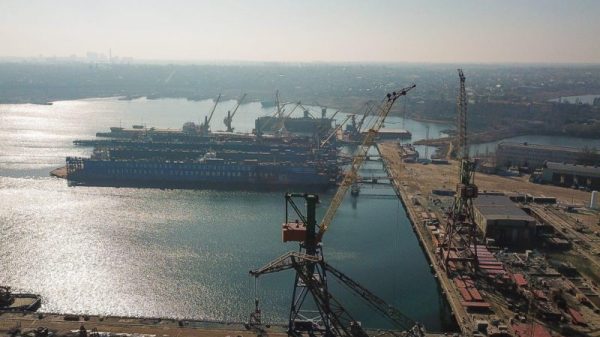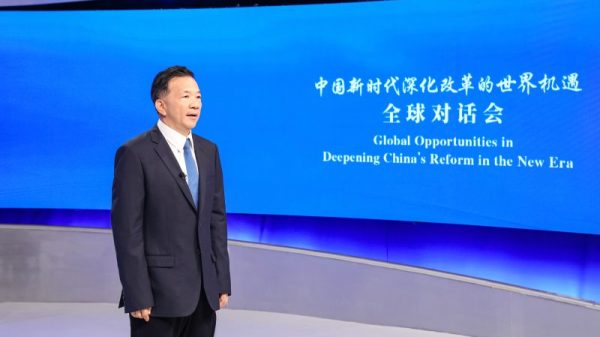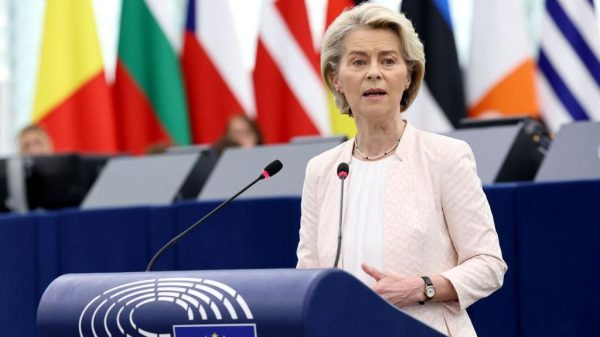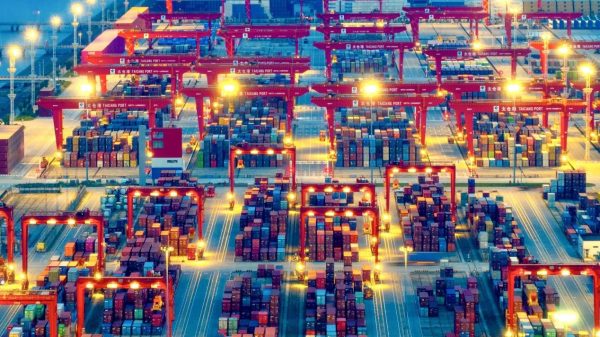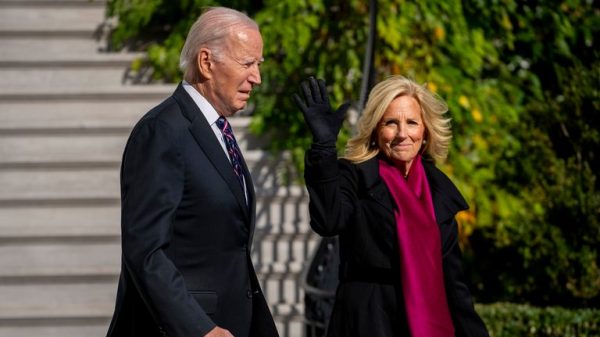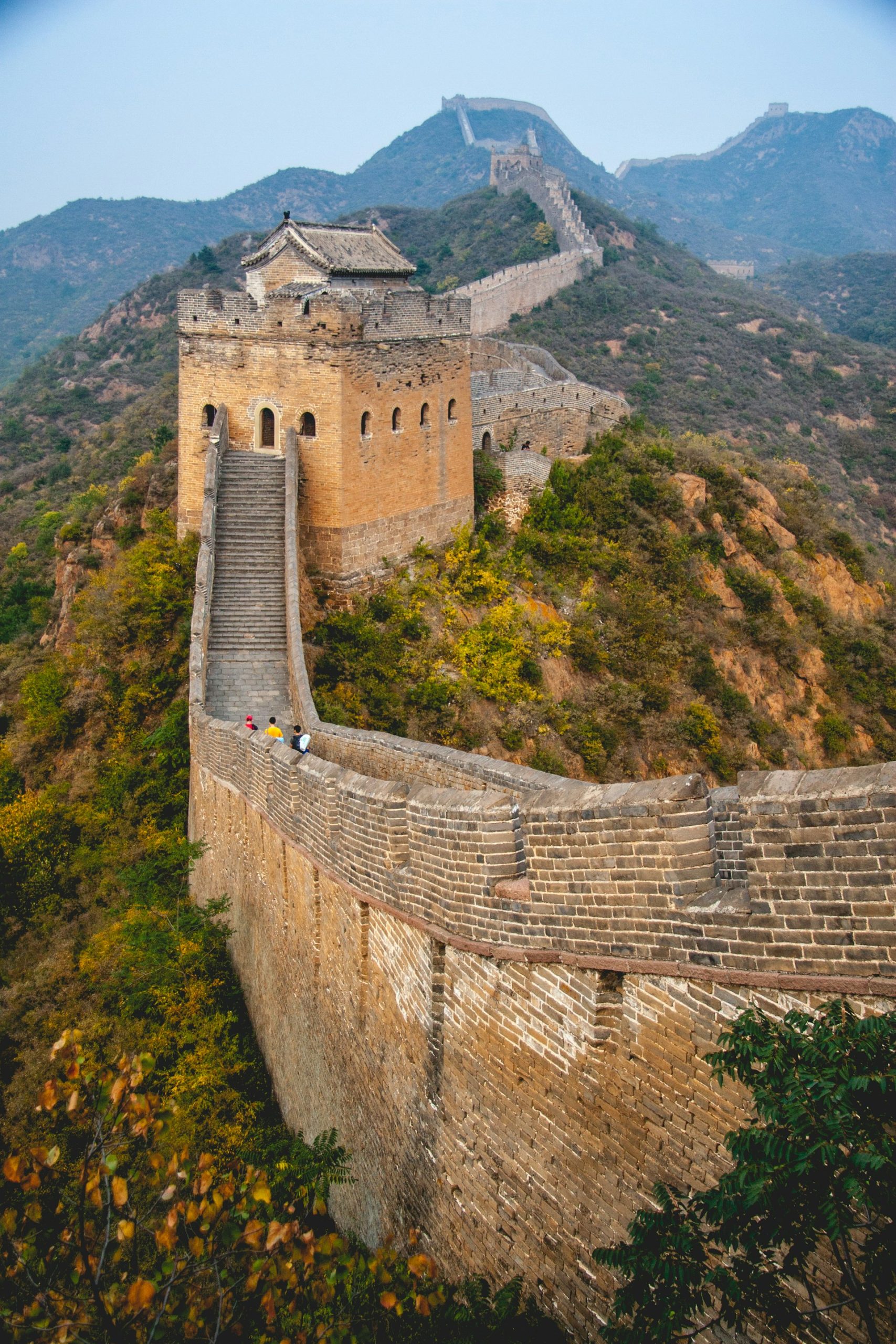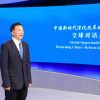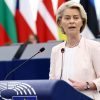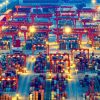None of the many European tourists visiting China would miss a trip to the Great Wall. The Great Wall is probably the most emblematic landmark in China. But it would be a mistake to associate Chinese-European relationships with a wall, whatever the archaeological significance of the monument.
In reality, the European Union is China’s biggest trading partner, while China is the EU’s second-largest trading partner. Landmark Chinese bridges, like those of the ancient city of Wuzhen, Zhejiang province may better symbolize the current state of relationships between China, the EU and other trading partners.
China’s much-lauded Belt and Road Initiative (BRI) is the best example of China’s integration into the world economy.
It could be said that the internet, trade and bridges are bridge-builders and the Belt and Road Initiative is the perfect symbol of bridges.

Shanghai is one of the four direct-administered municipalities of China.
In this exhaustive piece, Colin Stevens and Martin Banks of EU Reporter look at how the initiative, criticised by some and even feared by others, can help foster better relations at a time when the world probably needs it more than ever.
With wars waging in various parts of the globe and the world arguably standing at its most dangerous for many years, what better time than now for something that may help bring communities together?
Back in 2018 the European Parliament, in a resolution, called for a cooperative approach and a constructive attitude to exploit the great potential of EU-China trade and called on the European Commission for an intensified cooperation dialogue with China.
The Belt and Road Initiative

The Port of Rotterdam. Europe’s busiest gateway for global trade and major distribution hub for goods from China.
This innovative and bold Chinese initiative was most likely on the agenda of a rare meeting between Chinese President Xi and French President Emmanuel Macron and EU Commission chief Ursula von der Leyen earlier this month (6 May).
It was President Xi Jinping’s visit to Paris and his first in Europe in five years. The trip also included stops in Serbia and Hungary.
During the meeting with Macron and von der Leyen, the Chinese president was pressed on several issues including trade and Ukraine.
“It is in our interest to get China to weigh in on the stability of the international order,” said Macron, adding, “We must, therefore, work with China to build peace.”
“We have to act to make sure that competition is fair and not distorted,” added Von der Leyen. “I have made clear that the current imbalances in market access are not sustainable and need to be addressed.”
President Xi himself said he viewed relations with Europe as a priority of China’s foreign policy and that both should stay committed to the partnership.
“As the world enters a new period of turbulence and change, as two important forces in this world, China and Europe should adhere to the positioning of partners, adhere to dialogue and cooperation,” Xi said.
He said he had “made many appeals,” including about “respecting sovereignty and territorial integrity of all countries,” and that “a nuclear war must not be fought.”
Abigaël Vasselier, head of foreign relations at the Berlin-based MERICS think tank, told the media there may be “little concrete result” from Xi’s visit to France, because while “the optics are going to be extremely positive,” the French have some tough messages to deliver.
The Belt and Road Initiative (BRI) is a development strategy proposed by the Chinese government. It focuses on connectivity and cooperation between Eurasian countries. (BRI), an ambitious vision of a refashioned, interdependent and closely connected world.
It was unveiled back in 2013 by China’s President Xi Jinping during a visit to Kazakhstan. Until 2016 it was known as OBOR – ‘One Belt One Road’.

Most people have heard about it because of the large-scale infrastructure projects in more than 60 countries along both routes over land – forming the Silk Road Economic Belt – and over the sea – forming the Maritime Silk Road. There exist two more routes: The Polar Silk Road and the Digital Silk Road.
The strategy seeks to connect Asia with Africa and Europe via land and maritime networks with the aim of improving regional integration, increasing trade and stimulating economic growth.
The idea was (and remains) to create a vast network of railways, energy pipelines, highways, and streamlined border crossings, both westward—through the mountainous former Soviet republics—and southward, to Pakistan, India, and the rest of
Southeast Asia.
The project has, so far, led to the creation of an estimated 420,000 new jobs and now comprises more than 150 countries.
The focus continues to be on connectivity and cooperation between Eurasian countries and BRI can be seen as an ambitious vision of a refashioned, interdependent and closely connected world.
Most agree that the BRI will have a great impact on the political and economic world order. However, there are – still – different views about the BRI from European opinion and policymakers.
Here we look at the different views, BRI’s impact so far in areas such as energy, e-commerce and tourism and how it affects a couple of EU member states Belgium and Italy, plus its importance to global European seaports.
Back in 2018, that EU parliament resolution reflected the eagerness of Europe to deepen its trade relations with China, the world’s second-largest economy. But, for many, this endeavour will only be successful, if we realize that building a sustainable relationship is like building bridges.
When a stone arch bridge is being built, the structure remains completely unstable until the two spans meet in the middle and the arch is closed. Similarly, robust relations between Europe and China are required to be based on structured principles and not only on potential economic gains, it is argued.
Viviane Reding, a former Vice President of the European Commission, believes that China-EU relations should not be limited to trade, saying, “Human beings are more than consumers and producers. Human beings have higher aspirations.”
Those, she believes, can be promoted by cultural and educational initiatives, as in the past with the EU-China Tourism Year (ECTY) which allowed, besides its economic significance, to share cultural heritage and develop a better understanding between European and Chinese peoples.

When she was a member of the European Commission, Reding, a former MEP from Luxembourg, launched the “Erasmus Mundus Programme”, a worldwide cooperation and mobility program in the field of higher education, promoting dialogue and understanding between young talents. Since 2005, many Chinese students have seized the opportunity of scholarships to study in European universities. This, she says, is a “perfect example” of how openness leads to mutual benefits.
“We should continue on that road.”
Reding says that a third principle on which China-EU cooperation should be based is mutual respect for each other’s diversity and the same holds true for the China-EU relations.
“We may have different views, but different views should not stop us from cooperating and communicating. On the contrary, our differences are an incentive to increase the fora and occasions where we can discuss and interact to promote mutual understanding.”
ChinaEU is a Brussels-based business-led international association aimed at intensifying joint research, business cooperation and mutual investments in Internet, telecom and hi-tech between China and Europe.
It says that, in ancient times, countries competed for land but, today, the new ‘land’ is technology,”
One example is cooperation between Rhea Vendors Group, an Italian manufacturer of tailor-made coffee and vending machines, which has developed the ‘Barista On-Demand’ vehicle in collaboration with Chinese robo-delivery firm Neolix. The new product combines a vending machine with self-driving tech as China’s coffee market expands rapidly.
“Together, we harness Italy’s design legacy and our 60 years of coffee expertise, with Chinese tech advances to stay ahead of the age and provide a seamless coffee experience to our customers all over the world,” says Andrea Pozzolini, CEO of Rhea Vendors Group.
A key milestone in BRI – its tenth anniversary.
Wu Gang, minister counsellor at the Chinese embassy in Belgium, says that, over that time, there has been a “great transformation” in China which was now about to enter a “critical stage” of its development.
There has also been improved cooperation between China and Europe and he looks forward to further similar cooperation over the next decade,
Last year also marked another significant event – the fourth volume of a book by the Chinese President Xi Jinping – in which he outlines his hopes for a “better understanding” of China which, he says, is now entering a “new era.”

The book, called “The Governance of China” seeks to address “four questions” about China and the world and Wu Gang hopes it will help create a “better understanding” of China and foster more cooperation.
Such sentiments are echoed by Vincent De Saedeleer, deputy managing director of CSP Zeebrugge Terminal and vice president of Cosco Belgium, a Chinese maritime company.
He says the Belt & Road project has survived various “hurdles”, including economic and health crises, but is an increasingly important umbrella mechanism for China’s bilateral trade with BRI partners and is now helping to promote global trade.
“It takes time and everything cannot be achieved at once but there has been a great effort by China to become more open and make its markets more transparent. There is a willingness by China to be a market player and there have been a lot of improvements in the decade since the scheme was started.”
Academic Bart Dessein, a professor at the University of Gent, estimates BRI has created 3,000 projects and 420,000 jobs worldwide.
What some first feared as a Chinese “grand strategy” is, he says, just a continuation of the same policy China has been developing since the 1970s.
“It is not some sort of ‘master plan’ to be feared but is, in fact, a very, very local initiative and is directly related to the people.”
The fact is, though, that EU-China relations have gone through some turbulent times of late and last December’s EU-China summit in Beijing was the first face-to-face summit to be held in four years.
Even so, Tom Baxter, global China editor at China Dialogue, says that, in the field of energy, for example, there are some grounds for optimism.
Green Energy
Over 40 per cent of BRI energy projects announced in the first half of last year were wind and solar and energy makes up the majority of investments and construction deals signed through BRI.
Baxter points out that, until very recently, these investments were dominated by fossil fuel projects. But in the first half of 2023, over 40% of BRI energy projects announced were wind and solar, with 22% each for gas and oil, and zero for coal projects. The reasons include China’s stated commitment to clean energy, avoiding the risk of stranded fossil assets, and China’s need to export its solar production overcapacity, explains Baxter.
But he also cautions that new types of financing and international partnerships will be needed, while recipient developing countries will need to step up their own clean energy ambitions. One sign of this happening is the 36 coal power plants (nearly 36 GW of capacity) that BRI has cancelled since September 2021, he adds.
In energypost.eu, Baxter goes into the details of the new challenges that will be faced.
Green development on the BRI was discussed at one of three high-level forums taking place during the Third Belt and Road Forum in Beijing last October and, as the BRI enters its second decade, Baxter asks: will it be able to fulfil the 2021 promise to “step up” support for green energy in developing countries? What opportunities and obstacles stand in its way?”
According to the International Energy Administration (IEA), China is the major supplier of solar projects across the world, accounting for over 80 per cent of solar panel manufacturing worldwide and exports of Chinese-made solar components are soaring. In the first half of 2023, they increased 13 pc compared to the same period in 2022.

While the European market accounted for around half of those exports, data compiled by China Dialogue indicates that Belt and Road geographies are also a part of the picture of this boom in demand for Chinese solar components.
China’s involvement in the energy transitions of the Belt and Road is still evolving but, in terms of global trade, the hope is that as China shifts towards renewables and develops its world-leading solar and battery manufacturing power, Chinese companies will seek out new markets abroad.
EU members like Belgium and Italy could benefit.
But what exactly are the opportunities for Belgian companies offered by the Belt & Road Initiative? And what does BRI mean for companies and businesses in Belgium that trade in or with China?
Several experts anticipate that thanks to BRI’s huge infrastructure projects, trade costs for countries participating in the project will reduce significantly, resulting in a trade growth of more than 10%. Through BRI the Chinese government aims to accelerate economic integration of countries along the Silk Road and boost economic cooperation with Europe, the Middle East and the rest of Asia.
It is clear that this will also benefit sectors in which Belgian companies are strong global niche players. These range from logistics, energy and environment, machines and equipment to financial and professional services, healthcare and life sciences, tourism and E-commerce.
Currently, there are already regular train connections between different Chinese logistic hubs and Belgian cities, such as Ghent, Antwerp, Liege and Genk, but also to locations in neighbouring countries, such as Tilburg (the Netherlands), Duisburg (Germany) and Lyon (France). These rail freight lines between China and Europe complete the range of multimodal freight connections available in Belgium (air and sea), allowing all Belgian companies to choose the most suitable logistics solution for their businesses

An important part of the Belt and Road Initiative for Belgium is also the digital Silk Road. Today, digital trade and e-commerce are becoming an inseparable part of the global economy and Alibaba has built their logistic hub for Europe across 22 hectares at Liege airport. This achievement, costing some €75m, cannot be overvalued: it has made Belgium the European headquarters for the Digital Silk Road, strengthening the good relations between China and Belgium even more and offering unique opportunities for e-commerce to many Belgian companies.
China and Belgium are internationally recognized as countries with distinct technological capabilities. In an era marked by rapid technological advancements and globalization, international collaboration has become crucial for countries seeking to stay at the forefront of innovation. Consequently, there is a big advantage in increased technology collaboration between China and Belgium.
According to Peter Tanghe, Science & Technology Counsellor of Flanders Investment & Trade in Guangzhou, despite current geopolitical and other challenges, Belgian companies are still looking for ways to do business with China and want to discover where the opportunities are.
Despite the potential benefits, technology collaboration between China and Belgium (and other EU countries) does face certain challenges. Differences in regulatory frameworks, intellectual property protection, and cultural nuances can pose hurdles.
The Brussels-based Belgian-Chinese Chamber of Commerce (BCECC) sounds a real note of optimism, saying that collaboration between Belgium and China presents unique opportunities for startups and small to medium-sized enterprises (SMEs) in both countries.
Pointedly, it says, “By combining their strengths and addressing the challenges head-on, such partnerships between Belgian and Chinese companies and organizations do not only benefit the collaborating companies but also contribute to the advancement of global technology and the well-being of humanity.”
The Port of Rotterdam. Europe’s busiest gateway for global trade.
It is one of the world’s most automated ports and serves as a gateway to northern and western Europe. Chinese investment there has contributed to global trade. The Dutch port plays a significant role in China-Europe trade and, over the past few years, the number of containers has increased.

A spokesman for the Port told this site, “Obviously as a result of the industrialisation of countries in Asia, the Asia-Europe trade lane has become one of the most important trade routes for Europe. Roughly half of the containers handled in Rotterdam come from or go to Asia.
“The main reason is that China has become the world’s largest manufacturer since 2002. At the same time, Europe is an important sales market (Germany, France, UK).
“In addition, China has also started to import more and more goods, for example from Germany which is an important country of origin. We have no insight into the Chinese share of volume to/from Asia, but as the number of Chinese ports is significant on most shipping lines’ loops, a large share will be from or to China.
“There is also a shift in cargo flows as production moves from China to other countries in Asia.”
She predicts, “Asia will therefore remain an important shipping area for the port of Rotterdam (and other north-west European ports) in the long term.”
Digital Silk Road
Luigi Gambardella, president of the China EU Business Association, said the digital Silk Road has the potential to be a “smart” player in the Belt and Road Initiative, making the BRI initiative more efficient and environment-friendly. The digital links will also connect China, the world’s largest e-commerce market, to other countries involved in the initiative, he feels.
Indeed, the digital industry, including mobile networks, is among the most promising areas for cooperation between Europe and China as part of the Belt and Road Initiative, the China EU Business Association believes.
Using the China-Europe rail network, a crucial part of the Belt and Road Initiative, online retailers have cut the time transporting auto supplies from Germany to Southwest China by half, compared to sea routes. It now takes just two weeks.
China now has express freight services to over 28 European cities. Thousands of trips have been made and trade volume through cross-border e-commerce accounts for an estimated 40 per cent of China’s total exports and imports, making it a significant part of China’s foreign trade.
According to a DT Caijing-Ali Research report, cross-border e-commerce cooperation has brought China and countries involved in the Belt and Road Initiative closer, and the benefits will extend not only to trade but also to sectors such as the Internet and e-commerce.
Apart from online trade, Gambardella believes there is also a huge market for EU-China online tourism.
Ctrip, China’s largest online travel agency, signed a strategic arrangement with the Italian National Tourism Board and Ctrip CEO Jan Sun says tourism can be yet another “bridge builder.”

“Ctrip will expand international cooperation with Italian partners and is ready to be the ‘Marco Polo’ of the new era, acting as a bridge of cultural exchange between Italy and China,” she says.
“Italy was the destination of the ancient Silk Road and it is an important member of the Belt and Road Initiative- our cooperation will better unleash the potential of both tourism industries, create more jobs and bring more economic benefits,” she said.
Tourism, she believes, is the most simple and direct way to enhance people-to-people exchanges and “can build a bridge between China and the countries alongside the Belt and Road region as well as other countries in the world.”
Despite such optimism, Gambardella does caution that mutual trust could still be one of the obstacles hindering further exchanges in some EU member states.
Another to pick up on this is the highly respected Ian Bond, deputy director of The Centre for European Reform in the UK.
He told this website, “When it was first conceived, the ‘Silk Road Economic Belt’, linking China and Europe overland, seemed to offer Europe the chance to work with China on opening up Central Asia and giving new life to EU assistance programmes for the region that had been struggling along since the break-up of the Soviet Union.
“In 2015, when Jean-Claude Juncker was Commission President, the EU and China agreed on a ‘Connectivity Platform’ to link together projects under China’s Belt and Road Initiative and various EU projects improving physical and communications links between Europe and Central Asia. Since then, however, relations between Brussels and Beijing have deteriorated.”
Bond adds, “The Belt and Road Initiative came to be seen by the EU not so much as an economic development project and more as a tool to increase China’s political influence. In 2019 the Commission characterised China as a partner in tackling global issues, an economic competitor and ‘a systemic rival promoting alternative models of governance.’
“In recent years, the stress has fallen more and more on Europe’s systemic rivalry with China, as EU member states have become more concerned about unfair competition, theft of intellectual property, and, since Russia’s attack on Ukraine in February 2022, China’s political and practical support for Moscow.
“Recent revelations of Chinese intelligence operations in Europe, and efforts to influence European politics and policies, will do nothing to encourage the renewal of EU-China co-operation on ‘Silk Road’ projects. While goods will undoubtedly continue to flow from China to Europe by rail, it seems unlikely that the route will become a model of political partnership in the way that seemed possible a decade ago.”
Partly addressing such reservations, Cao Zhongming, China’s ambassador to Belgium, says his country remains committed to opening and creating favourable conditions for other countries “to share in China’s opportunities” (including BRI).
He recalls that Chinese Premier Li Qiang underlined in Davos at the end of 2023 that China will open its door “still wider to the world.”
The ambassador said, “China embraces investments from businesses of all countries with open arms, and will work tirelessly to foster a market-oriented, law-based, and world-class business environment.”
The Belgian-Chinese Chamber of Commerce is the largest bilateral chamber of commerce for companies engaged in business with or in China. It was established in the 1980s after China’s opening up and is a non-profit organization consisting of more than 500 members. The Chamber’s main goal is to advance the economic, financial, cultural and academic cooperation between Belgium and China.
Bernard Dewit is chairman of the respected Belgian-Chinese Chamber of Commerce (BCECC), believes BRI has already been a success, adding, “and that is the reality.”
He said, “The BRI is a great potential platform to promote multilateralism and policy, infrastructure, trade, financial and people-to-people connectivity. Especially in a divided, multipolar world with many interconnected issues, we need to promote more connectivity, so we are able to overcome common challenges – the most important one being climate change – together. The BRI is already creating more people-to-people exchanges, which fosters mutual understanding.”
Over the past decade, he was asked to elaborate on the notable contributions of the BRI to infrastructure development in participating countries and if there are specific projects or regions that exemplify its success.
He said, “The majority of Chinese investments are still going to Western Europe, but more and more projects are being implemented in Central-East- and South-Europe in recent years. Especially in European countries that were hit hard by the euro crisis, China stepped in by investing in regional logistics hubs, for example. A great illustration of this is the Piraeus port in Greece, a regional logistics hub and key entry point into Europe of which Chinese company Cosco Shipping Lines now has acquired a majority stake.”
The World Bank Group’s study on BRI transportation corridors suggests that while the initiative can accelerate economic development and reduce poverty in many developing countries, it must be coupled with substantial policy reforms such as increased transparency, improved debt sustainability, and the mitigation of environmental, social, and corruption risks. Dewit was asked for his thoughts on these recommendations and their relevance to the BRI.
He said, “Whereas the Initiative indeed forms a great platform for promoting multilateralism, I believe there are still some areas of which China could be mindful in its future development. Some countries are borrowing too much, raising the risk of default. The International Monetary Fund has said that more than 20 African countries are overly indebted.
“Even though we’ve seen some impressive investments in green energy projects, again a clear sign that China remains committed to combatting climate change, a lot of the BRI energy investments remained dominated by fossil fuels. On the other hand, China published its “Green Development Guidelines for Overseas Investment and Cooperation” and “Guidelines for Ecological and Environmental Protection of Foreign Investment Cooperation and Construction Projects” in 2021, and they have paid much more attention to environmental risk management for all BRI projects and their supply chains when engaging overseas.”
So, has the BRI achieved significant progress in infrastructure development, trade facilitation, financial cooperation, and fostering people-to-people connections between China and the participating nations?
He said, “The BRI has been an integral part of the global political economy over the past ten years and is likely to continue in the future. Data indicates that the BRI strategy has been largely successful. For example: China has signed MOUs with 140 countries and 32 international organizations over the world. Additionally, in 2012, China’s outbound foreign direct investment (FDI) was $82 billion, but in 2020, it was $154 billion, ranked as the world’s number one overseas investor. The increase in Chinese investment in BRI countries has also been impressive.
Both private and state-owned Chinese companies have been promoting green and high-quality development overseas projects in four major areas: energy, petrochemicals, mining, and transportation. These four sectors of the BRI account for about 70 % of the overall BRI overseas value of investments and construction. A good example of trade facilitation being made possible by the BRI is the China-Pakistan Economic Corridor, reducing the distance between China and the Middle East from 12,900 kilometres by insecure sea lanes to a shorter and more secure distance of 3,000 kilometres by land.”
As we look ahead to the second decade of the BRI, he was asked what opportunities and challenges he anticipated. How can the initiative continue to play a pivotal role in promoting international cooperation, economic development, and mutual understanding among nations?
He said, “One of the biggest challenges might be the scope and geographical scale of the BRI, making it more difficult to coordinate worldwide BRI projects effectively. One clear area of cooperation could be the acceleration of green energy projects. Since 2015, around 44 per cent of all BRI investments have gone into the energy sectors of its partner countries. Accelerating green projects worldwide will offer cooperation opportunities with the West and business opportunities for European companies. It is impressive to notice the wide ambitions of the BRI: it has also expanded its ambitions with the introduction of a Digital Silk Road, a Polar Silk Road, a Health Silk Road and a 5G-based Internet-of-Things (IoT) project. They will shape economics and geopolitics for decades to come.”
The message is clear and positive.
The BRI, a flagship Chinese policy, is not just about huge infrastructure schemes and statistics – it genuinely can lead to the mutual benefit of all companies, in China and in Europe.
In times when other continents are talking about walls, Europe (and China) should pay heed to building bridges. Amidst rising tensions globally that has to be welcomed.




